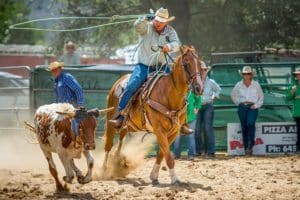Feeds and Supplements
- Topics: Article, Feeding Fats, Grains, Joint Supplements, Nutrition, Nutrition Basics
The key to a good feed program is to start with the proper type of forage for the individual, then (if needed) pick the right concentrate or supplement.3
Most horse owners try to provide the best diets for their horses, yet there’s often a difference between what they think the animals need and what they actually need, and there are also some misunderstandings about how those needs can be met. With many good commercial feeds available and countless supplements on the shelves, it can be hard to know what’s best for the horse.
Basic Feeds
Amy Gill, PhD, an equine nutritionist based in Lexington, Ky., says the foundation of a good diet is forage. Start with hay or pasture, then add grain concentrates and supplements only as needed. Most horses get by on little or no supplemental feed if they have good-quality forage. “All you need to provide is salt and fresh water,” Gill says. “If forage is not ideal, add a supplement containing protein, vitamins, and minerals. It’s a different story, however, if horses are stabled and don’t have access to pasture; you’ve limited them to what you provide.”
Pick the type of hay that best fits your horse. “Don’t buy (a high-quality) alfalfa- orchardgrass mix for a fat, retired, insulin-resistant horse,” says Gill. That type of hay is better suited for a young, growing horse or lactating mare. Find a lower-quality, lower-calorie hay for the fat, retired horse. He’ll do better with hay that’s safe to feed in larger amounts so he can occupy more time eating and be happier.”
Protein supplements might be needed if hay is low in quality–if it stood too long in the field before being cut or if hot and dry conditions matured the crop too quickly. Grain or a commercial feed can be added if the horse needs more calories and nutrients than what he gets from the hay. For a hard-working horse, supplementing fat is useful if the horse needs more energy in the diet without the risk for laminitis or colic inherent in a high-grain ration
Create a free account with TheHorse.com to view this content.
TheHorse.com is home to thousands of free articles about horse health care. In order to access some of our exclusive free content, you must be signed into TheHorse.com.
Start your free account today!
Already have an account?
and continue reading.

Related Articles
Stay on top of the most recent Horse Health news with

















